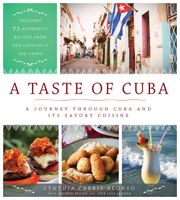The daiquiri originated in Cuba as a refreshing balance of sweet, sour, and spirit tastes made with rum. Although local residents probably enjoyed this mixture before the arrival of Americans to the island, the daiquiri’s history goes back to the late 1800s, when Cuba was fighting for independence from Spain and the United States intervened. It was in 1898, during the Spanish-American War, when President Theodore Roosevelt led the first US volunteer cavalry, named the Rough Riders, and landed on Cuba’s eastern shores, near a beach and iron mine named Daiquirí. Soon after their victory, popular lore says that an American mining engineer named Jennings Cox, who was in Cuba profiting from the Daiquirí mine, may have created the first version of the daiquiri drink. Cox was entertaining guests one evening when he ran out of the gin used in their punch libation. The only replacement Cox could find was the island’s ubiquitous rum, which he combined with lime and sugar to sweeten for his visitors. When everyone enjoyed the new drink and asked for its name, he called it the “Daiquiri,” after the nearby beach and iron mine of the same name. Throughout the next several years, bartenders revised the original mixture and made it as both a multi-serving punch beverage served over ice and a single-serving cocktail made by shaking the ingredients with ice in a shaker. It was two American authors who then gave the daiquiri its recognition and reputation. In 1920, F. Scott Fitzgerald mentioned the daiquiri in his novel This Side of Paradise. Later, Hemingway referred to the drink and the place where he drank it, one of his favorite Havana haunts, in his novel Islands in the Stream. Years later, President John F. Kennedy was known for favoring daiquiris as his preferred before-dinner drink, which brought the cocktail increased fame and popularity. It remains popular today and many bartenders add their own special twist to this classic recipe.

